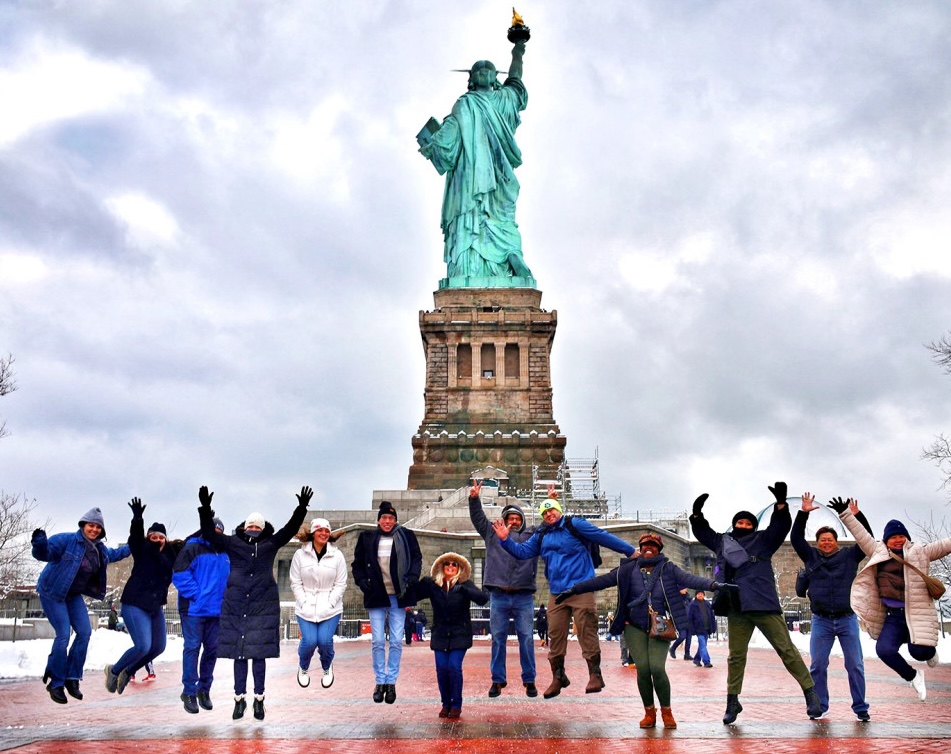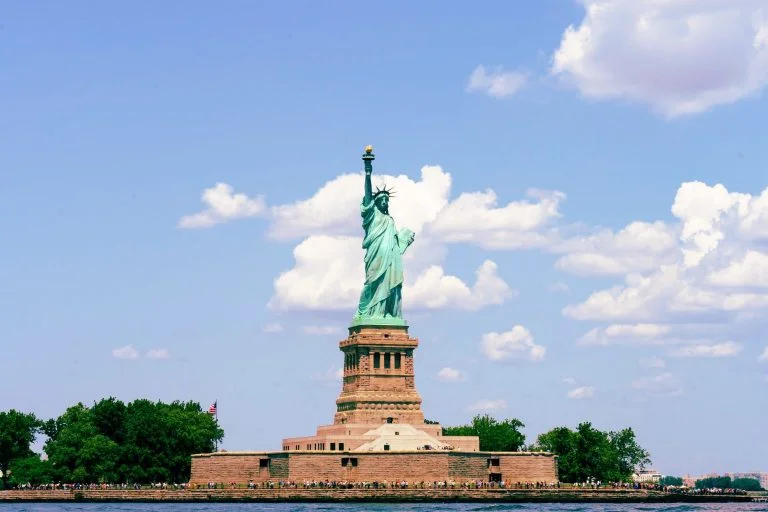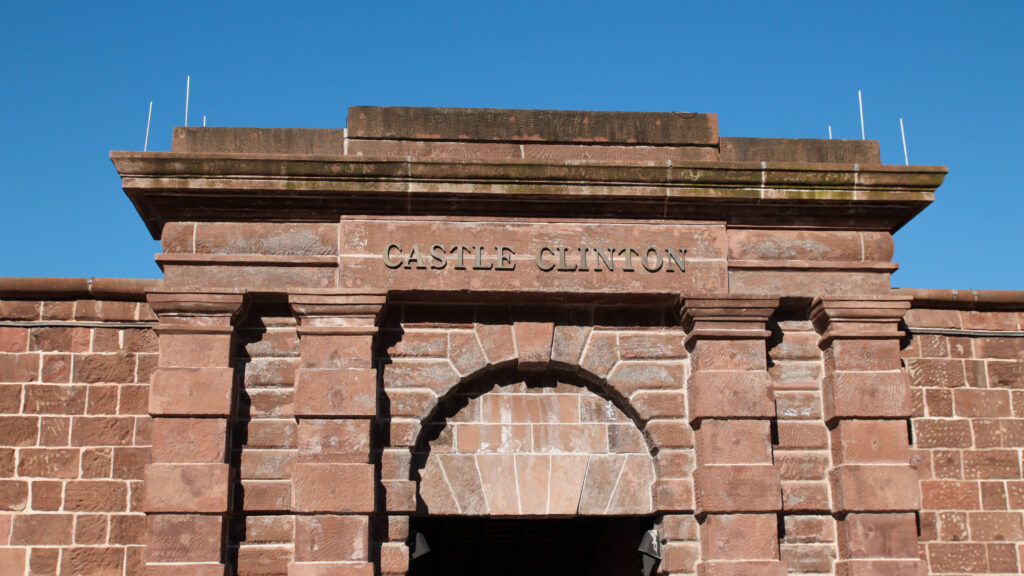
Castle Clinton, also known as Castle Garden, is a stout, open-air circular structure in the heart of Battery Park at the southern tip of Manhattan.
For New Yorkers and tourists alike, Castle Clinton is merely the place to buy tickets for the Statue of Liberty or find one of New York’s much-coveted free public restrooms.
But, as a NYC tour guide, I can tell you there are things to do inside and plenty of unexpected history within these mysterious sandstone walls. In this blog, I’ll explain what Castle Clinton is, things you can do when you visit, and the fascinating history of this Battery Park landmark.
Is it a real castle?
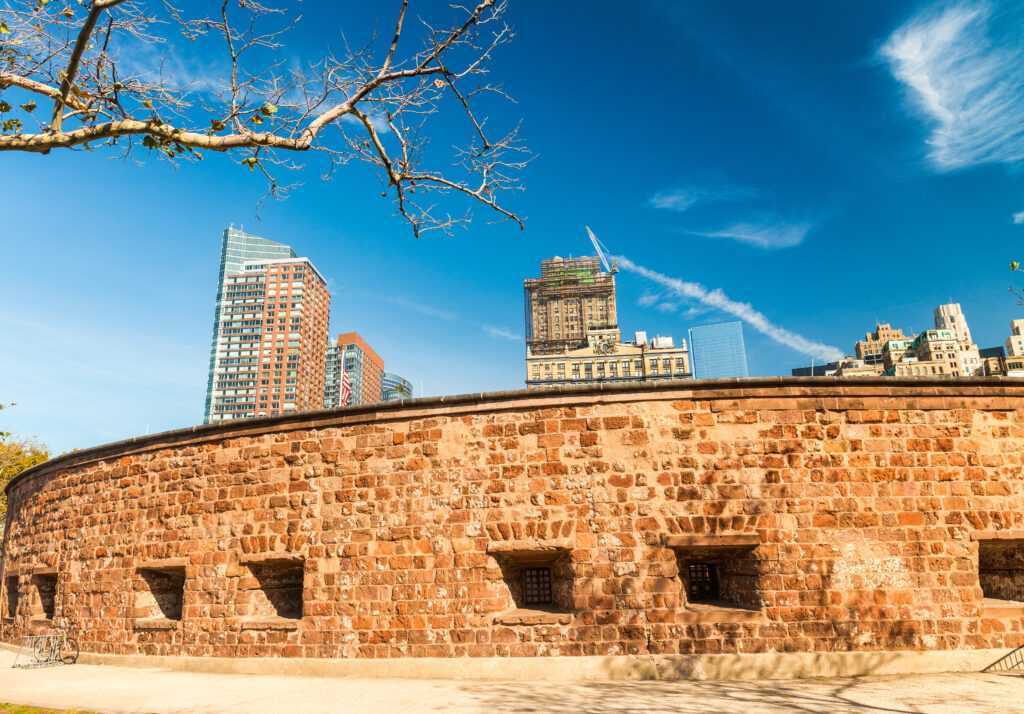
So is Castle Clinton a real New York castle? Not by Disney standards, no.
But the term “castle” isn’t just applied to places where princesses sleep. It’s defined as any large, fortified building. And that’s what Castle Clinton was built to do — fortify Manhattan from a possible British invasion after the Revolutionary War.
Castle Clinton: New York’s fort
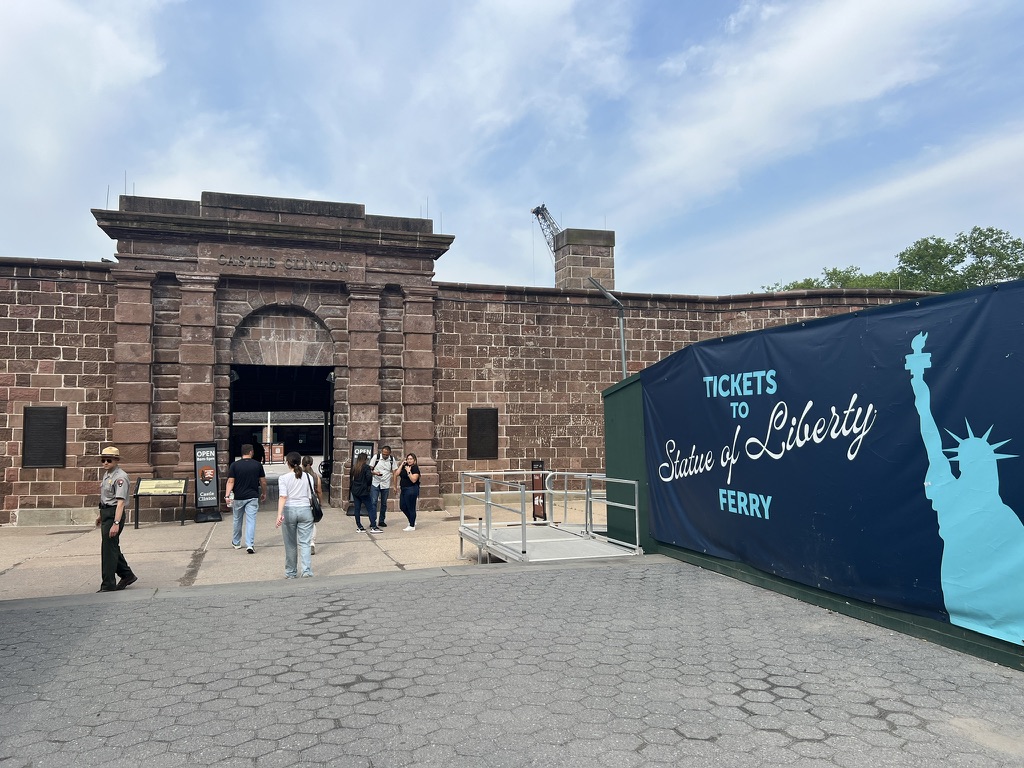
The British took New Amsterdam in 1683 from the original Dutch colony that had begun in 1624. The name was changed to New York. This new colony was a huge economic and strategic addition to their existing empire, so they immediately began building up the shoreline with dirt platforms, eventually erecting a full fort by 1735. This wasn’t Castle Clinton, but we’re getting there.
This battery played a major role in the Revolutionary War — first used by Americans to fire on British ships, then all too quickly retaken by the British and occupied until the end of the war.
After the war, the fort was demolished and the area became a fashionable park. But by 1808, tensions with Britain began to simmer again. A tense trade war led to what would ultimately become the actual War of 1812. Regretting the loss of the coastal defense battery, New York built four new forts in the harbor. One was this sandstone fort you see today, originally called the Southeast Battery. It was completed in 1811, equipped with 28 cannons, and connected to Manhattan by a wooden bridge.
Interestingly, these forts were never used — Britain skipped New York entirely and attacked Washington D.C. instead, burning down the White House and Capitol.
So New York was left with a beautiful, totally unused fort to repurpose.
How Castle Clinton got its name
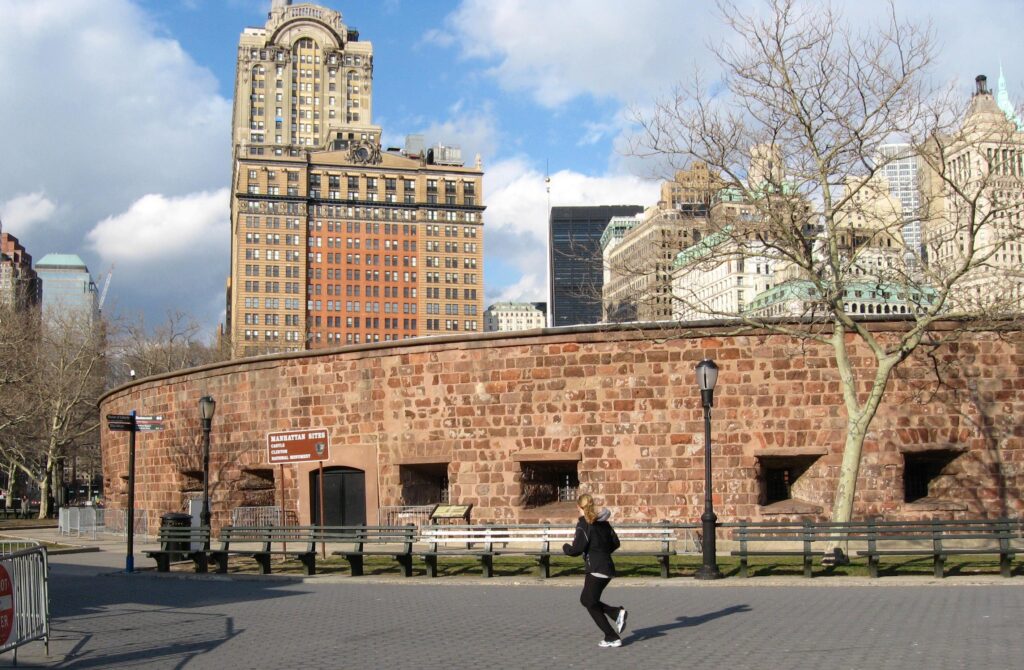
In 1824, the old Fort Clinton was renamed Castle Garden and transformed into a grand cultural venue. The Erie Canal, one of America’s most consequential infrastructure projects, opened in 1825 and was made possible by New York Governor DeWitt Clinton, for whom the fort was originally named. This canal, connecting the Hudson River to the waterways of the Midwest, New York City exploded as a global hub of trade, science, and bold new ideas. Castle Garden became the place where people from all over the world came to be wowed.
For just $5, you could see Samuel Morse demo his new telegraph or Samuel Colt show off his innovative revolving rifles. There were boat races, Egyptian mummies, early roller coaster prototypes, and American aeronaut Charles Durant’s thrilling hot air balloon takeoffs. You could sip mint juleps, dance the promenade, and even hear speeches by Presidents Andrew Jackson and James K. Polk. Many nights, through the open-air roof, fireworks were set off to conclude a performance.
In 1844, a breathtaking domed roof was added as well as more seats and Castle Garden became New York’s largest indoor concert hall, hosting the world’s best opera and theater.
Before “Wicked” or “Cats,” opera star Jenny Lind, aka the Swedish Nightingale, drew crowds from across America. Promoted by famed circus man P.T. Barnum, this debut sparked what the local press called Lind Mania, selling out 6,000-seat shows six nights in a row. (And if you’re thinking that sounds like the woman in “The Greatest Showman” that Hugh Jackman as Barnum almost had a romantic dalliance with — yes, that’s her, but the romance is all Hollywood and not real history.)
Immigration before Ellis Island
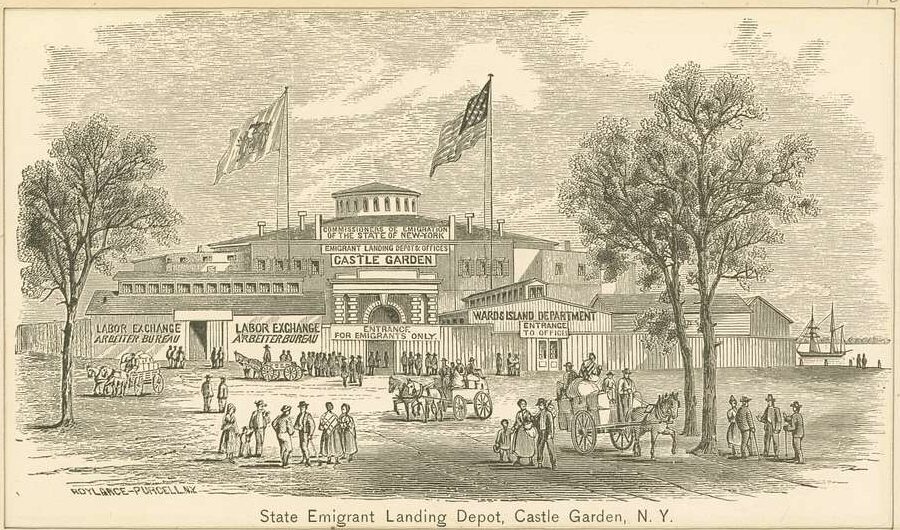
In 1855, Castle Garden became the nation’s first immigration registry center, run by the state of New York. Landfill was added to connect the fort to Manhattan, and the interior was turned into a giant rotunda with benches for 3,000 people, though only four desks processed them.
Before this, unbelievably, no formal immigration system existed. Millions had already flooded to this land of opportunity, including 300,000-600,000 Irish fleeing the 1845 potato famine. Immigrants often wandered off ships into the city with no guidance — making them easy targets for cons and crime. A registry system was urgently needed for safety and order.
Between 1855 and 1890, 8-9 million immigrants were processed at Castle Garden, including magician Harry Houdini (Hungary) and scientist Nikola Tesla (Serbia). The chaotic scene inspired the Yiddish word “kesselgarten” to describe any loud, confusing place — oy vey!
By the 1870s, the center employed translators for over a dozen languages. Despite a head tax intended to reduce crowds, Castle Garden remained the preferred entry for immigrants from around the world. In 2005, The New York Times estimated that up to one in six Americans may descend from someone who came through here — though most records were lost in an 1897 fire that also destroyed early Ellis Island archives.
The Castle Clinton aquarium
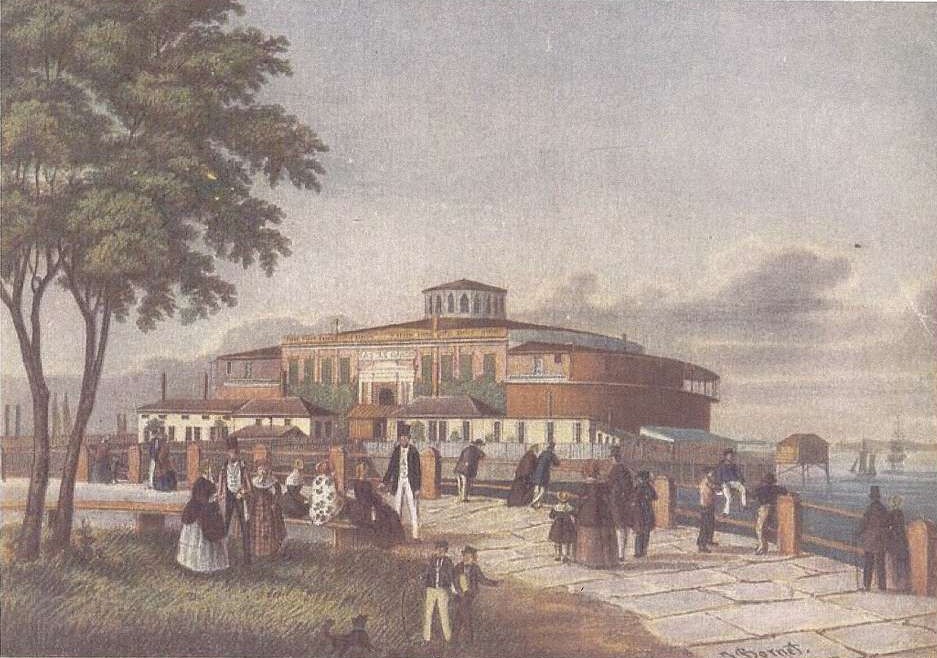
In 1892, immigration operations moved to Ellis Island, and over the next four years, Castle Garden took on its cutest role yet as the first home of the New York Aquarium.
While immigrants settled in the Lower East Side, over 10,000 aquatic animals, including penguins, made their home in 120 tanks and enclosures. Many of these exotic creatures were brought by sea captains and yachtsmen returning from global voyages.
The aquarium’s fresh water came from the new Croton Aqueduct, which also supplied New York City’s famously clean drinking water. Salt water was pumped directly from the Hudson River. Admission was free, and over 5.5 million visitors came within the first four years. The aquarium kept expanding adding bigger and better tanks, labs, and educational programs,
Many New York developers believed there were better uses for this plot of land than affordable housing for sealife. All around Battery Park, skyscrapers were sprouting, slowly creating the towering skyline that defines Lower Manhattan today. In 1941, the aquarium was moved to Coney Island, where it remains today.
The Castle Clinton National Monument
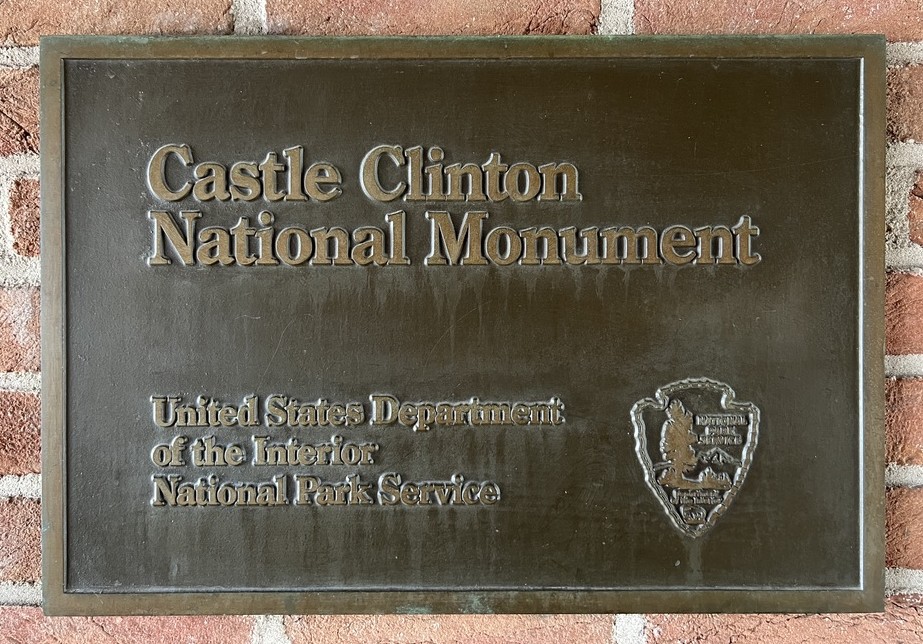
On August 12, 1946, President Harry S. Truman signed a bill to designate Castle Garden as a U.S. National Monument. It was officially dedicated as Castle Clinton National Monument on October 24, 1950, restoring its original name and much of its original structure, including the sandstone walls and open-air design.
After the September 11 attacks in 2001, Castle Clinton finally had the chance to serve its country as the National Guard headquarters in New York City for six weeks.
Today, the castle mostly functions as a gathering point for visitors heading to the Statue of Liberty (and tour guides like me!). Occasionally, you’ll catch a free evening performance. There are also ongoing plans to revive its legacy as a 19th-century opera house, complete with a new dome and tiered seating for an intimate and contemporary performance space.
Castle Clinton may not be on most visitors’ bucket lists — but if you’re heading to Liberty Island, it’s worth taking a few extra minutes to step inside this storied national monument. From military stronghold to opera house to immigration center to aquarium, it has truly seen it all — and still stands ready for what comes next.
Tips for your visit to Castle Clinton
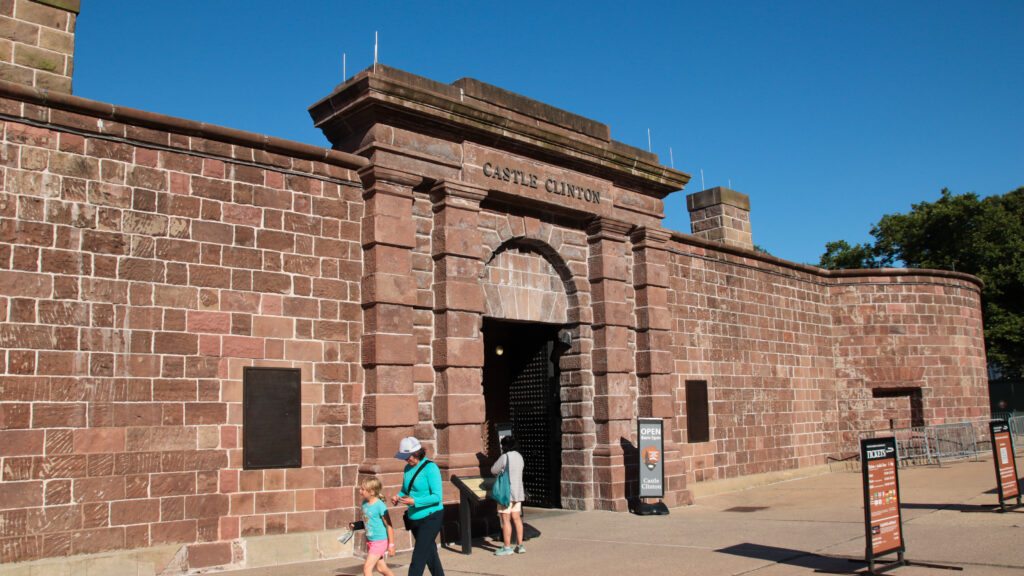
There are free park ranger tours four times per day at 10 a.m., 12 p.m., 2 p.m., and 4 p.m. on most days, but check the site to verify.
The souvenir shop inside is way times less crowded than the gift shops at Liberty and Ellis Islands. Some of the same items sold there can be found here as well other items like books celebrating other New York-based U.S. national monuments. There’s an especially robust selection of Stonewall items. It’s open 8 a.m.-5 p.m. daily.
There’s also a tiny museum inside the rotunda that will take you less than 10 minutes to enjoy. Inside, you’ll see early models of the castle and surrounding battery, images from its many uses over the past two centuries, shells of local sea creatures, and more.
Looking for more to do — besides taking a guided tour to the Statue of Liberty, of course? Check out our guide to things to do at Battery Park, where the monument is located. It’s a family-friendly destination right here in Lower Manhattan.

